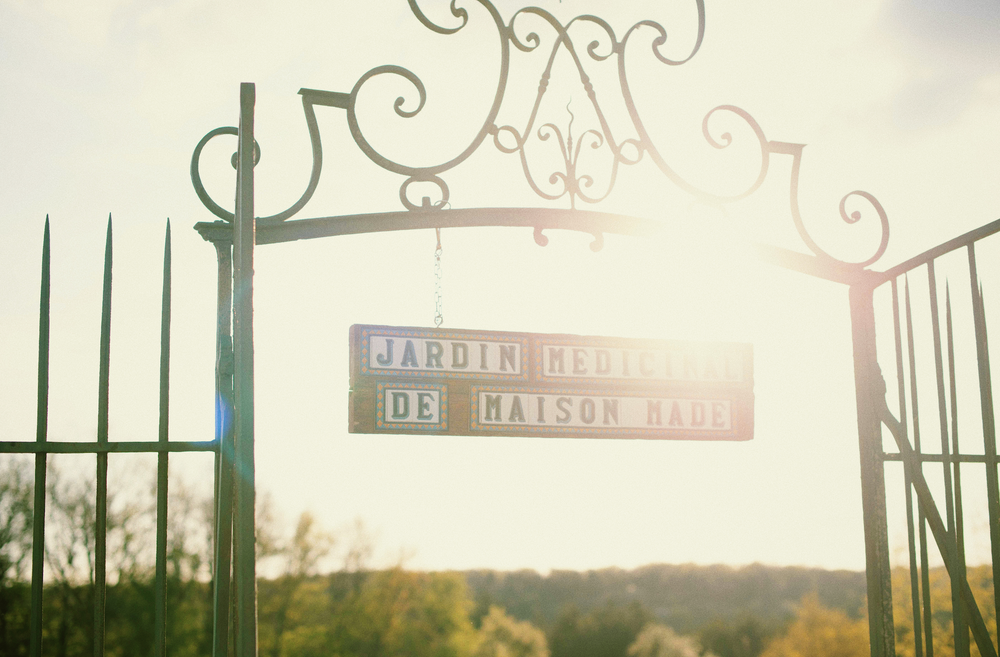Summer at the M/M Farm
NOTES DU JARDIN - ÉTÉ 2020
Time: 9:04 PM CST
Temperature: 33° C (91° F)
Weather Report: Hot & Dry
Points-of-Interest: Despite the heat and lack of rain, both new and veteran plants are faring well.

As I write this, legs dirty, heavy, and tired, I can hear the swallows chirping away as they perform their daily evening hunting acrobatics in the winding daylight of dusk. There’s a special kind of tranquility here on the farm that contrasts rather starkly with the frenetic energy of the city, where the end-of-day seems to imply the beginning of something (usually the nightlife) rather than the end. The calmness at this hour runs parallel to the lifestyle, where daylight means work and nighttime means rest.
There is still some light left here, however, as the last glow of the sun fades closer to 10:30pm due to the higher latitude of Burgundy to that of New York City. This is both a blessing in that there is more time for tending to the garden, but also sometimes a daily race to get dinner going, close out some tasks on the computer, and get sufficient repose to be ready to go all over again in the morning.
But as it is our last night here before we leave for the airport tomorrow morning to head back to New York, we are taking it slow. Our bags are packed, a gratin with potatoes from the garden is baking in the oven, the wine is poured, and Jamiroquai is oozing from the speakers in the background as we reflect over the past two weeks in Burgundy. This trip wasn’t without its challenges (we’re coming to the conclusion that there will always be challenges with running a medicinal herb garden…), but we are satisfied with what we were able to achieve, and are looking forward to what we will be offering to the skincare market in the very near future.
It will be difficult to recap all the work completed, as it was a whirlwind of infrastructure improvements, Biodynamic practice implementations, garden design changes, and, of course, the growing, harvesting, processing, and storage of the plant material we use for our skincare products. That being said, I’ll highlight some of the more major developments whose advancements over time most galvanizes us to the prospect of what we’re building.

Gardens are a continual, unending work-in-progress. Taming Nature in a manner in which you want to allow it to “do its thing” but also provide the best care possible to the plants is a delicate balance. The weeds that grow no matter the climate, seem to have this strong, innate sense of entitlement that no, this is their land and provide us with a never ending game of whack-a-mole until the day we’re able to really remove every last sliver of root. But as our plants have already situated themselves, they are now well situated to prosper for the rest of the season.

One of the major improvements was the extension of our rainwater collection system. Water is becoming more and more scarce as Climate Change continues to alter the region, meaning that water collection and distribution has become a primary consideration for the garden. We expanded our reserve by 4X, adding more cisterns to collect the rainwater for the times it does actually rain. We adjusted the gutters on the roof of our farm to direct water to these cisterns so that in one good bout of rain, we can fill up our entire supply. Next, in the fall, the priority will be to ensure a good PSI pressure and install a proper distribution system that can run on a timer to be able to provide our plants a healthy drink of water both in the early mornings and late evenings. This alone should support the health and increase the yield of each bed significantly and ease our minds as we wonder from afar how our plants are handling the heat over the summer months.

For our Biodynamic preparations, we are finally bringing our own valerian to the garden to be able to make the Biodynamic compost preparation BD507. As it’s its first year in the garden, we’ll see how it fares, expanding its space in order to produce a good amount in 2021. We also “discovered” (in one of those classic “how did we not think of this before” moments) the vast quantity of pigeon manure in the Pigeonnier. Pigeon’s actually produce a very nitrogen-rich manure that is excellent for both the compost pile and for direct use in the garden. Not having to rely on neighbors’ manure is a game changer for us, as as-local-as-possible manure is a primary component for our eventual Biodynamic certification of the farm and garden.
Another achievement we are proud of is finally planting our rose wall. It will take a couple years for it to come to fruition but we planted numerous rose bushes which we will have climb the Eastern wall of our garden, providing flowers throughout the spring and summer for all of our pollinators and visitors alike. In between the roses we planted a mix of rose geranium and malvas, with lemon balm growing naturally which will try to coax into filling the gaps.
Also new to the garden this year is marshmallow, a variety of mints, goji berry, pomegranate trees, an apricot tree, hibiscus, and sweet marjoram. These are joining our “old-faithfuls” of calendula, lavender, burdock, chamomile, lemon balm, nettle, elder, st john’s wort, yarrow, rosemary, thyme, hops, and raspberry. Everyone is doing well and commingling nicely, benefiting from the biodiversity and the regenerative Biodynamic practices that we’ve instilled into our land, bringing a buzzing of life to a previously dormant piece of pasture.
Now as the light fades the swallows have already returned to their nests and the bats have come to pick off the insects the swallows didn’t catch for themselves. The sky in the distance is still giving off a light, dusty shade of blue and the bottle of wine is half empty. As I leave you for dinner, I do hope that you join our waitlist so be the first notified for when our new products are ready. All of our above efforts will be exemplified within each and every bottle, a piece of our garden in your hands.




